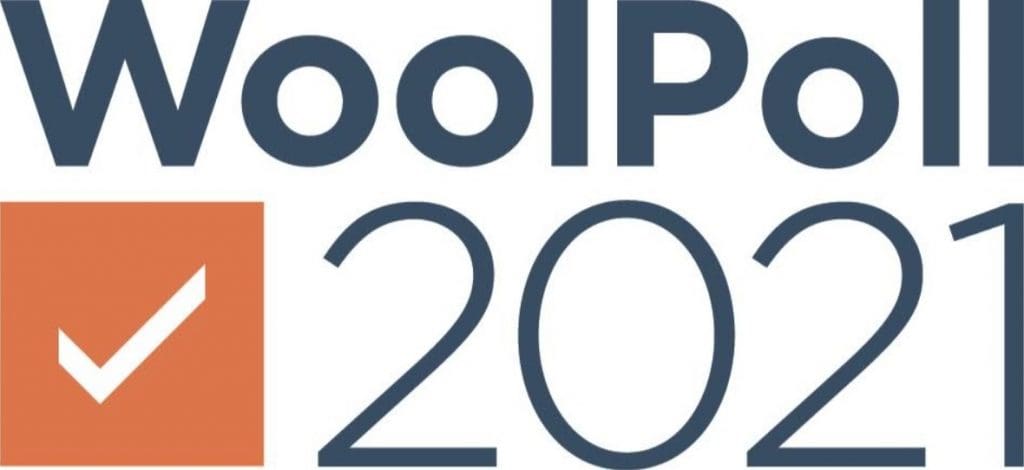
WOOL grower bodies have condemned Australian Wool Innovation’s inclusion of a WoolPoll how-to-vote card showing growers how to preference a higher levy, in the AWI growers document mailed to all voters.
Despite the industry WoolPoll Panel’s accompanying Voter Information Memorandum giving a detailed non-specific explanation of the optional preferential voting system, AWI has included its preferred voting card in the AWI Growers Document without openly stating its intent.
The 2020 WoolPoll Review recommended that the Department of Agriculture pursue amendments to the Wool Services Privatisation (Wool Levy Poll) Regulations 2003 requiring AWI to provide its recommendation of a particular levy rate to growers separate from the Voter Information Memorandum.
The review found that AWI’s recommendation should be presented to growers as a stand-alone document – this year called the AWI Growers Document — which could be included in the voting pack, though separate from the VIM.
AWI earlier this year declared a preference to increase the current 1.5pc levy to 2pc, and also recommended a supplementary rate option of 2.5pc as advised by the review, giving levy payers five levy option – zero, 1pc, 1.5pc, 2pc and 2.5pc. Grower bodies support retention of the current levy rate, whereas stud breeders asked by Sheep Central have supported a 2pc or higher levy.
Sheep Central asked AWI chair Jock Laurie to justify the inclusion of the how-to-vote card in the guise of a voting system description and its relationship to AWI’s addition of a 2.5pc supplementary levy option on the WoolPoll 2021 ballot. However, an unidentified AWI spokesperson replied that the AWI board has been very clear about its preference for a 2pc levy rate.
“The grower document, which is prepared by AWI, naturally reflects that preference and makes a strong case for a 2pc levy.
“It is also worth noting that the processes around WoolPoll are approved by the Federal Government,” the spokesperson said.

WoolProducers president Ed Storey
However WoolProducers president Ed Storey said it is now apparent that AWI’s inclusion of the 2.5pc option as a supplementary rate, and highlighted by the how-to-vote card in the growers document, was aimed at directing preferences away from the 1.5pc option (the current levy rate) “which is simply not in the spirit of recommendation” made by the WoolPoll review.
“WoolProducers questioned at the time of the review report release under which grounds the supplementary rate would be accepted and who was to approve it, which was subsequently ignored by DAWE.
“In WoolProducers’ submission into the 2020 WoolPoll Review, we were strongly opposed to AWI being able to make a levy recommendation as it automatically politicises the process, which unfortunately is exactly what has happened,” he said.
“WoolProducers was keen to see the WoolPoll process made completely independent under the 2020 Review.
“Unfortunately the review has made the process less independent and provides AWI with more opportunity to influence growers voting,” Mr Storey said.
“AWI has done nothing wrong by including the 2pc recommendation document, they are just following the recommendation although in an extreme manner.
“It is the department that has further damaged the WoolPoll process through its review, which we made very clear at the time of the report being handed down.”
Mr Storey said growers have independence to decide how they vote.
“However, AWI is doing everything they can to try and ensure the 2pc levy outcome, through the continued narrative to growers that they need more money to do basic R&D and marketing and fund producer projects.
“It appears that the AWI board is putting the interests of the company ahead of their levy payers, who at the end of the day own AWI,” he said.
“WoolProducers strongly believe that 1.5pc is more than adequate to deliver on the programs particularly in light of the $106 million reserves.”
In WoolPoll’s optional preferential voting system, if any option gets more than 50pc of primary votes cast, it wins and preferences do not have to be distributed. Preferences are distributed in a preference count if a majority primary vote result is not achieved. If needed, further preference counts are undertaken until a majority option is identified. The option with the lowest number of primary votes has its preferences distributed first until one option rate has more than 50pc, then the next option lowest has its preferences distributed to achieve a single majority.
AWI how-to-vote card is ‘clever’ – AWGA

AWGA director Robert Ingram
Australian Wool Growers Association director and experienced election scrutineer Robert Ingram said under the WoolPoll system, for votes supporting 1.5pc to flow into 2pc, it (1.5pc) would have to be the third lowest preferred primary option.
In past WoolPoll ballots, the vote for 1.5pc has been the second highest primary vote. Past WoolPoll voting indicates that any primary votes for 2.5pc would flow into the 2pc tally in preference counts, he said.
He said AWI’s how-to-vote card is trying to limit the number of votes for zero, 1pc and 1.5pc and maximise the chances of a majority 2pc levy result.
“All they have done is bend over backwards to the pressure from the traditional studs to have 2.5pc in some inane belief that 2pc has a better chance of winning.”
Mr Ingram said AWI’s how-to-vote card is clever in advocating no votes for the zero or 1pc options.
“But trying to provide comfort to growers that they can give a minor preference to 1.5pc is meaningless.
“If the primary 1pc vote is higher than the initial 1.5pc tally, and a significant number of people vote for 1.5pc without nominating a preference, the 2pc option has a higher likelihood of succeeding.”
Voting for WoolPoll 2021 closes on Friday 5 November. For more information, call the voter helpline on 1800 990 365. Voting can be conducted either online at www.woolpoll.com.au or via email, fax or post.
Compare the optional preferential voting descriptions and diagrams in the WoolPoll Voter Information Memorandum and in the AWI Growers Document.

Ed Storey, “WoolProducers was keen to see the WoolPoll process made completely independent under the 2020 Review”. A great article. Robert Ingram, brilliant. What’s happened to the Department of Agriculture? When is someone going to pull AWI up? Minister Littleproud, we need help.
We have had a one-off, $90 million dollar deal go sour with France, yet AWI blows $100 million every year. Levy payers you are taken for a ride properly. A 1 percent levy is the only option to slow this gravy train. You are doing your levies cold, it’s best to limit the damage to 1 percent. The Kiwis are smart, it took them about five minutes to stop paying AWI.
Alas, the combined “wisdom” of AWI seems to think that throwing more money at a problem will solve it.
Like Mr Packer said of the Australian Taxation Office: “I am not convinced that you are spending my contributions (taxes) very well..”.
It is high time that AWI put more effort towards promoting the more affordable blends as opposed to “pure wool”.
It is well past time that the Australian Electoral Office was charged with the responsibility of conducting all AWI voting; for directors and for the levy. Why was this not common practice years ago? Furthermore, any group of say 50 growers should have the same allocation of funds as AWI has to promote their respective levy recommendations. It is outrageous that AWI should have endless funds to fund their recommendation, a privilege not available to other growers. But then it is to be expected with AWI enjoying the political patronage it does.
Growers are smart enough to see AWI trying to sway votes for their own interests.
Vote 1 % to send AWI your message.